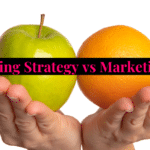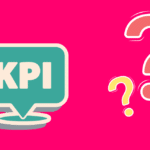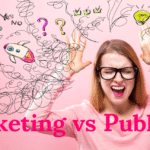In the ever-evolving landscape of business promotion, two concepts, in particular, have emerged as key components in the battle for consumer attention: publicity and marketing.
These two strategies are often used interchangeably, but there are distinct differences between them.
Publicity is a subset of marketing that focuses on creating awareness and shaping public perception of a brand, product, or service. It involves the strategic dissemination of information through various channels to generate interest and maintain a positive image.
Marketing, on the other hand, is a broader concept that encompasses the entire process of identifying, satisfying, and retaining customers. It includes market research, product development, pricing, distribution, and advertising, in addition to publicity.
In this article, we’ll dive into the finer details of both publicity and marketing, breaking down their key differences and how they work together to help businesses achieve their goals.
Starting with publicity…
What is Publicity?

Publicity is a communication strategy that aims to shape public perception by disseminating information through various media outlets.
It is often used to generate awareness, interest, and a positive image for a brand, product, or service. Unlike traditional advertising, publicity is not paid for, but earned through newsworthiness or public interest.
Publicity can take many forms, including:
- Press releases: Official statements issued to media outlets to announce new products, events, or developments within a company.
- Media coverage: Articles, interviews, or news stories featuring the brand or its representatives.
- Events: Organizing or participating in events to showcase products or expertise.
- Social media: Leveraging platforms like Facebook, Twitter, or Instagram to share news and interact with the public.
- Awards and recognitions: Highlighting achievements to build credibility and trust.
The goal of publicity is to create a positive public image, establish credibility, and maintain ongoing engagement with the target audience.
Now, let’s dive into the world of marketing.
What is Marketing?

If you’re here, you know that marketing is a multifaceted discipline that encompasses a variety of activities aimed at promoting and selling products or services.
It involves understanding customer needs and desires, creating value, and developing a connection between the consumer and the product or service provider.
The ultimate goal of marketing is to match a company’s products and services to the people who need and want them, thereby ensuring profitability.
The core elements of marketing include:
- Market Research: Gathering, analyzing, and interpreting information about a market, about a product or service to be offered for sale in that market, and about the past, present, and potential customers for the product or service.
- Marketing Strategy: Developing a plan that identifies a specific target market and outlines how to reach that audience effectively, including what message should be communicated and what channels should be used.
- Product Development: Designing and developing products or services that meet the needs and desires of the target market.
- Branding: Creating a unique name, symbol, or design (or combination thereof) that identifies and differentiates a product or service from others.
- Advertising: Any paid form of non-personal presentation and promotion of ideas, goods, or services by an identified sponsor using various media.
- Promotion: Activities that communicate the product or service and its merits to target customers with the intention of persuading them to buy. This can include sales promotions, direct marketing, public relations, and personal selling.
- Sales: The actual transaction of getting customers to purchase the product or service.
- Distribution: The process of making a product or service available for the consumer or business user who needs it. This can involve selecting appropriate distribution channels (like retailers or e-commerce) and managing logistics.
- Customer Relationship Management (CRM): Practices, strategies, and technologies that companies use to manage and analyze customer interactions and data throughout the customer lifecycle, with the goal of improving customer service relationships and assisting in customer retention and driving sales growth.
- Pricing Strategy: Setting a price for a product or service that reflects the value it delivers, while also considering costs, competition, and demand.
Remember, marketing is not a one-time event but a continuous process that involves constant adjustment and refinement based on market feedback and changing conditions.
And, with the advent of digital technology, the scope of marketing has expanded to include digital marketing tactics like search engine optimization (SEO), content marketing, social media marketing, email marketing, and more.
Ok, now let’s get into the weeds of the subject and explore the differences when compared side by side!
The Difference Between Publicity and Marketing

The primary difference between publicity and marketing lies in their focus and control.
Publicity focuses on generating attention and shaping public perception, often through media coverage, whereas marketing is a broader process that involves product development, pricing, and customer satisfaction.
Here are some key differences between publicity and marketing:
- Control: Publicity is often considered more of a “free” promotional tool, as companies have limited control over how the media presents their information.
- Objective: The primary objective of publicity is to create awareness and shape public perception, while marketing is aimed at creating demand, increasing sales, and satisfying customers.
- Message: Publicity messages are often presented as news, aiming to inform or educate the audience, whereas marketing messages are more persuasive and aim to influence consumer behavior.
- Channels: Publicity relies on media outlets, such as newspapers, TV, radio, and online platforms, to disseminate information.
- Timeframe: Publicity often has a short-term impact, as it is related to specific events or news. Marketing strategies can have both short-term and long-term effects, as they are aimed at building relationships with customers and increasing brand loyalty.
It’s important to note that while publicity and marketing are distinct, they are not mutually exclusive.
In fact, they often work together to achieve a company’s overall goals.
In the next section, we’ll discuss the relationship between the two concepts and how they can be used together to create a successful marketing strategy.
How Publicity and Marketing Work Together

While they have distinct differences, they can complement each other in the following ways:
- Publicity as a subset of marketing: Publicity is often considered a subset of marketing, as it is a promotional tool used within a broader marketing strategy.
- Creating awareness and shaping perception: Publicity focuses on creating awareness and shaping public perception of a brand, product, or service.
It uses media coverage and other communication channels to disseminate information and generate interest.
Marketing, on the other hand, includes various activities, such as market research, product development, pricing, and distribution, to identify and satisfy customers’ needs. - Influencing consumer behavior: Both publicity and marketing aim to influence consumer behavior but in different ways.
Publicity creates a positive image and generates interest, while marketing strategies, such as advertising, sales promotions, and direct marketing, are more focused on encouraging purchases and building brand loyalty. - Integration: Publicity and marketing are often integrated to create a comprehensive promotional strategy.
For example, a company may use a combination of media coverage, social media, and targeted advertising to promote a new product. - Evaluating effectiveness: Publicity and marketing efforts are evaluated based on their impact on the target audience and the overall success of the promotional campaign.
Companies use various metrics, such as reach, engagement, and sales, to measure the effectiveness of both publicity and marketing strategies.
While publicity and marketing have distinct differences, they are closely related and work together to achieve the common goal of promoting a brand, product, or service.
Hopefully, you now feel confident in knowing the differences, let’s wrap this up.
Wrap Up

In a world where competition for consumer attention is fierce, understanding the differences and nuances between publicity and marketing is crucial.
While they may seem similar at first glance, publicity focuses on creating awareness and shaping public perception, while marketing encompasses a broader range of activities, including product development, pricing, and distribution.
However, it’s essential to remember that they are not mutually exclusive. Publicity is often considered a subset of marketing, and the two concepts work together to achieve the common goal of promoting a brand, product, or service.
Furthermore, the lines between publicity and marketing are becoming increasingly blurred as companies leverage a combination of media coverage, social media, and targeted advertising to reach their audience.
So, as you navigate the complex landscape of business promotion, remember that a comprehensive approach that integrates both publicity and marketing strategies is key to achieving success.
If you’d like to learn more about the importance of public relations in the modern business world, check out the video below:
Frequently Asked Questions
What are the key differences between marketing and public relations?
Marketing and public relations (PR) are distinct functions within an organization. Marketing focuses on promoting and selling products or services, while PR is more about managing the company’s reputation and fostering positive relationships with the public.
While both disciplines aim to influence consumer behavior, they use different strategies to achieve their goals. Marketing relies on advertising, sales promotions, and direct marketing, while PR uses media coverage, community relations, and crisis management.
What is the role of publicity in a marketing campaign?
Publicity plays a crucial role in a marketing campaign by creating awareness and shaping public perception of a brand, product, or service.
It is often considered a subset of marketing and is used to generate interest and maintain a positive image. Publicity uses media coverage, press releases, and events to disseminate information and engage with the target audience.
How does marketing affect public relations?
Marketing and public relations have a symbiotic relationship, where each can impact the other. A strong marketing campaign can create positive exposure and enhance a company’s image, while effective PR can help market products and services by managing the company’s reputation and fostering trust.
In some cases, marketing and PR may collaborate to align messaging and achieve common goals, such as a product launch or brand awareness campaign.
How do public relations activities contribute to a marketing strategy?
Public relations activities contribute to a marketing strategy by enhancing the company’s image and creating a positive environment for the promotion of products and services.
PR can build credibility, trust, and goodwill with the public, which can, in turn, make marketing efforts more effective. PR activities like media coverage, events, and community relations can also provide valuable exposure and create opportunities for brand promotion.
What is the difference between advertising and publicity?
Advertising and publicity are two different ways of promoting a brand, product, or service. Advertising is a paid form of communication, where a company pays for space in media outlets, such as print, TV, or online, to deliver its message to the target audience.
Publicity, on the other hand, is not paid for; it is earned through newsworthiness or public interest. Publicity uses media coverage, press releases, and events to disseminate information and engage with the target audience.










